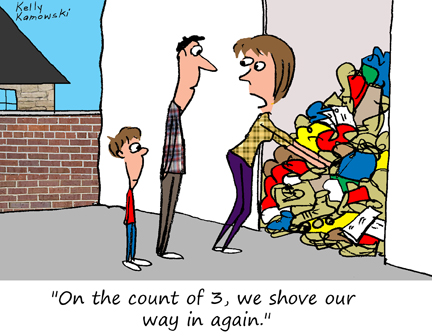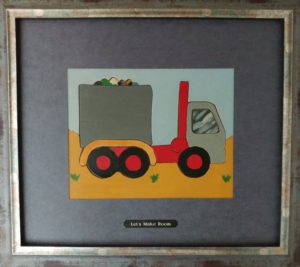Every so often I have to declutter something in my home.
I don’t want to lose touch with what my clients experience and I like what it does for my peace of mind. It frees me of some amorphous burden I sometimes experience in other parts of my life. It’s like a form of exercise or meditation for stress relief.
Today’s lesson is brought to you by hair conditioner.
You see, I have very thick, wavy hair that gets tangled easily if I don’t use some kind of detangler or conditioner. Years ago, maybe once when I was a child, I was washing my hair and I’d run out of detangler. The next thing I knew, my mother was doing her best to detangle my matted mess and causing me much pain and anguish in the process.
I never thought about it until today but while I was decluttering my bathroom and utility cabinets I noticed I had a lot of hair conditioner. Even more striking however was how much I resisted letting it go, even though I wanted to declutter. I thought, “How many bottles of hair conditioner do I really need?”
In fact, I thought about all the rationale questions I ask my clients:
“If it disappeared could it easily be replaced? YES.”
“Do I love this particular bottle? NO.”
“Did I have enough already? ABSOLUTELY!”
So when it came down to really examining my own resistance to letting go of an abundance of hair conditioner, I had to trace it back to that moment of pain. I never wanted to be caught without it again. “Doing so,” my brain told me, “would surely lead to pain and suffering.”
In California recently, thousands of people have lost their homes to wildfires. I know from my experience as a professional organizer and from friends who have lost their homes in fires, that going through extreme trauma and loss can be devastating. The recovery process is long, complicated and fraught with real fears of attachment and letting go.
I once had a client who had survived the loss of two homes through fire. Her collection of emergency supplies could fill a small garage.
Fear, I’ve learned, doesn’t have to come from a big trauma. It can come from small events too.
Fear lives in your body and your psyche for a long time. Fear of loss, fear of change, fear of re-experiencing pain. Fear is such a strong and powerful emotion, it doesn’t matter how much time goes by or even what caused it in the first place; It continues to rule our behaviors and our habits.
So what can you do when you notice fear ruling you at a time when you need to feel strong?
Let’s say you need to downsize your home because you are moving to a smaller space. When it comes to doing the simplest decluttering, pay attention when you see yourself holding on to something for apparently no obvious reason. Notice what emotions come up.
Ask yourself,”what does this item remind me of?” Don’t minimize it, no matter how silly it may seem. If a memory gets triggered, allow yourself to review it.
- What in that memory may be getting in the way of your home organizing goals?
- Is it a fact that whatever you remember will or could happen again?
- Is it probable? If it did, how would you cope?
Imagine letting go of the item and see what comes up and what you would do if it happened.
There is amazing information in our brains that can help with not just the act of organizing or decluttering but can also give us insight into ourselves to help us heal from our biggest traumas or even small ones. The pain is real.
The question is can you control how you react to it now? Doing so will empower you to take control of the fear.
Once you can objectively examine the real benefit of getting to where you want to go, you will realize the real price is holding onto an old fear when you no longer need to be afraid or even better, when you know you’ve survived.
I can throw out that old hair conditioner now.









